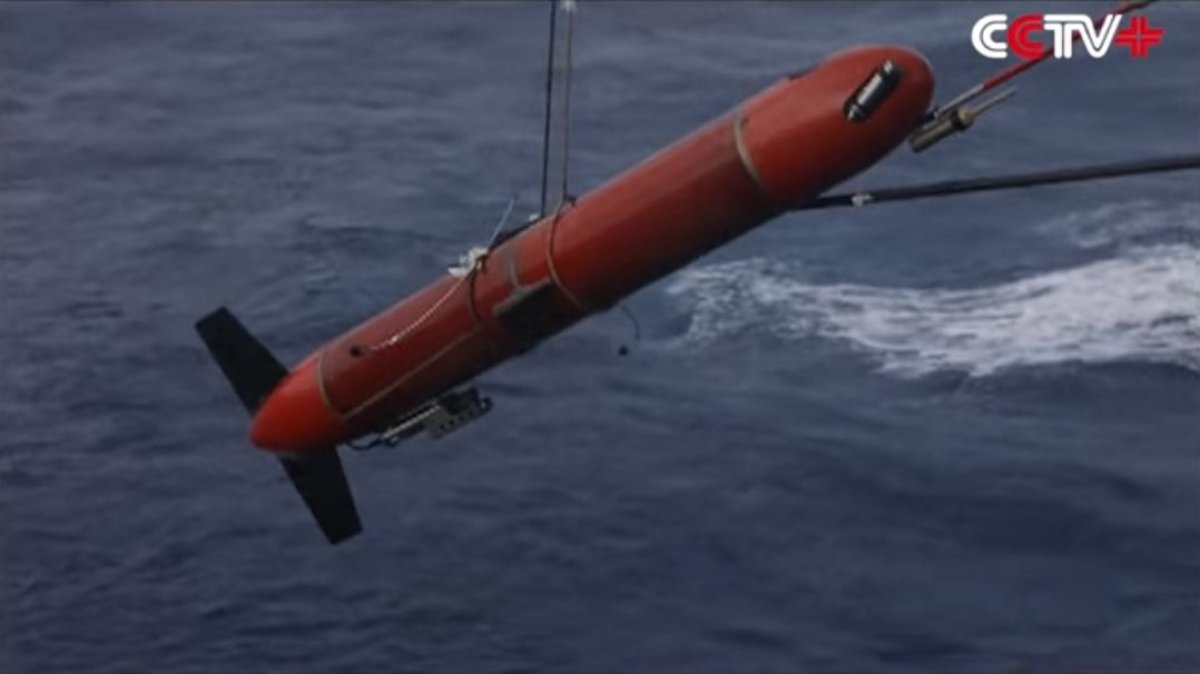
China is looking to guard its territorial claims in the Asia-Pacific from what it considers U.S. aggression, and Beijing's latest maritime tool could catch the Pentagon's submarines faster than ever.
China claims it released 12 unmanned drones, known as gliders, into the depths of the South China Sea to collect environmental data, the state-run Xinhua News Agency reported Sunday. The outlet described the high-tech glider, known as Haiyi (meaning "sea wings" in Mandarin Chinese"), as an underwater robot that was more efficient, more durable and used less energy than its predecessors, all while instantly relaying data underwater, a feat not even the U.S. has mastered. The scientific devices were not weaponized but could be used to instantly detect U.S. submarines traveling in waters China claims as its own.
Related: China's deadliest drone compares to U.S. rival, but it's cheaper and easier to use
"The data is being transmitted back to a land-based laboratory in real time," the expedition's chief scientist, Yu Jiancheng, told the Xinhua News Agency, according to an article published Wednesday by the South China Morning Post. The piece quoted Yin Jingwei, dean of the college of underwater acoustic engineering at Harbin Engineering University, as saying the project's success, if true, "is definitely a breakthrough."

The glider was developed by the state-run Chinese Academy of Sciences, which previously tested it in March, during which it reportedly broke a previous deep-diving record set by the U.S. The academy said Haiyi was able to swim to a depth of over 20,764 feet, or nearly 4 miles down, beating the U.S.-held world record of over 16,964 feet, or about 3.7 miles. Using a unique battery and a special coat to protect it from over 60 tons of underwater pressure, it also broke records in 2014 by swimming over 635 miles nonstop in 30 days, China Daily reported. Chinese military media have already speculated the country's armed forces could put Haiyi to military use.
"Since there is no power propulsion, the acoustic signature is extremely low. That characteristic suggests that [this platform] can have great significance for the military domain," Chinese defense magazine Ordnance Industry Science and Technology wrote last year, according to The National Interest.
Haiyi would give China extensive eyes under the South China Sea, where the U.S. is challenging Beijing's extensive territorial claims, and the ability to anticipate enemy vessels in real time. The marginal sea, which is considered the largest in the Western Pacific region, covers an area of about 1,423,000 square miles and has an average depth of 3,478 feet, with a maximum depth of 16,457 feet at the China Sea Basin. It's also where the U.S. and its allies accuse China of constructing artificial, militarized islands, complete with an extensive communications array and potential missile launchers.
President Donald Trump has already approved a plan submitted by Defense Secretary James Mattis that would expand the Navy's presence in the contested waters, something China's ruling Communist Party said would "aggravate the regional military situation," according to its nationalistic mouthpiece, Global Times. The newspaper urged China's military "to strike back firmly and take necessary measures to safeguard China's territory and maritime rights and interests."
#China's domestic underwater glider reached a record-breaking depth of 6,329 meters during a mission in the #MarianaTrench. pic.twitter.com/0lhKH8avF4
— ShanghaiEye (@ShanghaiEye) March 7, 2017
The U.S. and China, the world's leading economies, have long differed over policy and often compete to surpass the other in military achievements. Earlier this year, Popular Mechanics detailed another Chinese sea drone, which was capable of skimming the ocean's surface, flying just 18 inches above water to keep it undetectable by ships due to the delicate curvature of the Earth. Avoiding less wind resistance due to its low height, the anti-ship drone can reportedly fly 600 miles per hour for 1.5 hours, giving it a range of 900 miles in the vast sea. It was also believed to be able to deliver a 2,000-pound explosive payload.
China's efforts to top the U.S. in drone technology have manifested in the air as well, with the Asian power beginning mass production of its Rainbow or Caihong-5 (CH-5) weaponized drone for foreign buyers. Its developers have boasted that the unmanned aerial vehicle can fly longer and is easier to use than its primary U.S. competitor, the General Atomics MQ-9 Reaper. CH-5, however, is believed to have a lower flight ceiling, making it vulnerable to surface-to-air fire.
Uncommon Knowledge
Newsweek is committed to challenging conventional wisdom and finding connections in the search for common ground.
Newsweek is committed to challenging conventional wisdom and finding connections in the search for common ground.
About the writer
Based in his hometown of Staten Island, New York City, Tom O'Connor is an award-winning Senior Writer of Foreign Policy ... Read more
To read how Newsweek uses AI as a newsroom tool, Click here.








